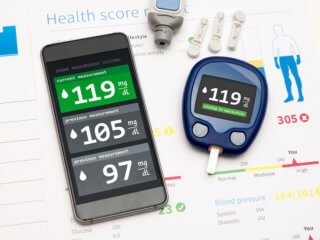How does a young Danish founder & physician is fighting cardiac arrest?
Heart problem, which is a leading disease around the world accounting for about 17 million deaths annually. Majority of them are due to cardiac arrest, which can’t be cured perfectly yet. You may think about chest compressions and defibrillation. But these methods are very less responsive. Hemorrhage stands next to cardiac arrest in killing people. There must be a plan to solve this problem. Habib Frost, a Danish doctor who now turned into entrepreneur thought of this way and introduced NEURESCUE to provide a second chance to your heart.
New technology to fight cardiac arrest
Neurescue is a tiny, computer-controlled balloon catheter which is used to supply blood to our heart when in danger and prolong the life of the patient. It can be used during CPR or a critical bleeding. The device is inserted into the femoral artery, which is present in the leg and occludes the aorta, the biggest blood vessel in the body. This is to redistribute blood flow generated by chest compressions to the two most sensitive organs, i.e., the heart and the brain. This increased blood supply protects the brain from damage, thus addressing more time to find the underlying cause of the cardiac arrest. It can significantly improve the current low survival. This technology also consists of a controller which includes fault protection architecture that allows for the correct and safe placement of the catheter in a bedside or out of hospital setting without CT imaging or X-ray. Also, there is an intelligent filing system that prevents under and over filling. This technology may look somewhat clumsy, but it’s a life saver. This is not a joke.
Is it a good idea?
This technology serves well in treating the cardiac attacks by supplying blood to the heart and brain, thus providing more time to address the problem. Apart from that, it can also be used in treating hemorrhage, which is the escape of blood due to rupture of a blood vessel. It can be done in both inside and outside of hospitals by expanding the time window to stop bleeding with a particular surgery. Also, Frost said that this technology is not only limited to the inside of the hospitals. It will be moved to out of the hospitals and then deliver a broad range of solutions such as paramedics, nurses, etc. The idea is good as well as innovative.
| Recommended for you | |
| Blood sugar monitoring the holy grail of wearables technology | |
| New virtual reality and augmented reality in training physicians | |
| Digital health trade shows and conferences in India |
What is the possible impact on cardiac arrest?
Typically, during a cardiac arrest, the blood flow will be reduced from the heart to various parts of the body. These parts will start dying if there is a lack of blood flow. Body parts respond differently for this phenomenon. Some parts such as liver and kidney can survive for up to 2 to 3 hours and certain sensitive parts such as brain can start dying just after 15 minutes. So, Neurescue is wanted to be focused on the brain. Conventional defibrillators or chest compression methods can provide consciousnesses up half-an-hour. But our Neurescue can make our brain active for about 2 hours at this condition. This time is beneficial and even valuable to address the problem and save a life. Possibly, Neurescue acquires a positive impact in treating cardiac arrest. Moreover, this startup has risen $4.75 million as an initial fund.
Chances of this technology to fight cardiac arrest
There is a saying that “prevention is better than cure.” But for sometimes, like in the case of cardiac arrest, prevention can no more help. For people like elders, there is a particular abnormality in the functionality of heart which comes with their age, and so, the prevention cannot be trusted. For such cases, the cure is the only way. Neurescue was perfectly apt for it. Heart problems have become very common in many parts of the world. So, there will be a bright future for this technology in the healthcare market. It is expected that Frost is going to pilot the device to selected European hospitals immediately after running the safety tests on it. Later, it may reach to remaining parts of the world.
Image Credit: https://twitter.com/habibfrost
Video Credit: https://youtu.be/KDlnMWb5qxg
















